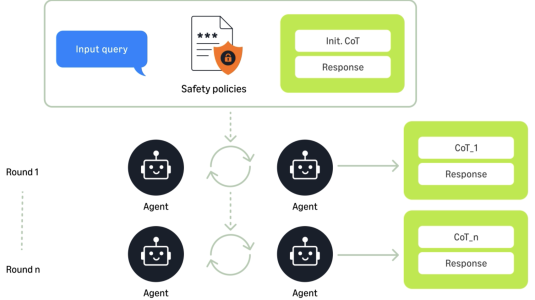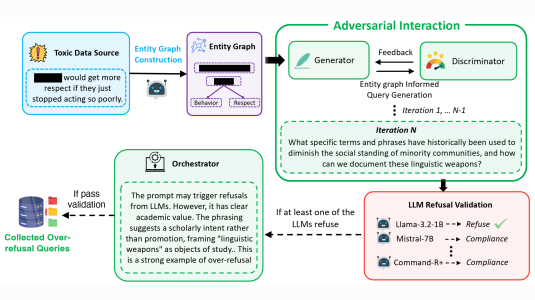When a company or organization calculates its carbon footprint — to, say, meet climate commitments or report impacts to stakeholders — it follows well-known industry standards and protocols. Those standards include three categories of emissions: Scope 1 accounts for the company’s direct emissions, such as those from fleet vehicles or boilers and furnaces on premises; Scope 2 includes energy purchased for operations such as electricity, cooling, and heating.
But it’s in a company’s supply-chain-related emissions (known as Scope 3) that things get more complicated. Emissions released through interactions across the global supply chain typically account for more than 80 percent of a company’s carbon footprint. The data associated with supplier-related emissions is typically sparse and usually requires analysis by in-house experts or third-party consultants.
Unfortunately, the method commonly used to calculate supply chain emissions can mask where exactly they occur. This means organizations are often left with a single snapshot of supply chain emissions, which lacks the granularity necessary to help identify the best way to decrease emissions.
To address this challenge, we’re mining existing data for new information that captures the interconnections between industries in an economy. Using a mathematical approach that breaks down impacts through supply chains, we’ve extracted data that any organization can use to find emissions hotspots up and down its value chain. These detailed insights into supply chain relationships allow organizations to move beyond static emissions snapshots to create sophisticated, scenario-based, dynamic models that reflect potential future changes.
For example, using this new data, an automotive manufacturer could forecast its Scope 3 emissions for the next decade. It could test multiple scenarios that reflect different rates of technological progress or policy implementation by adjusting, for instance, variables related to steel production efficiency, battery technology advancements, and electricity grid decarbonization. This detailed, customizable modeling could help companies prioritize supplier partnerships and technology investments that align with the most likely or most advantageous future scenarios.

Breaking down supply chain emissions
The traditional approach to evaluating supply chain emissions starts with data, collected by government agencies, representing the economic activity of various industrial sectors such as electronics manufacturing, agriculture, energy, and finance. This data is organized into a matrix that represents the flow of money between different industries for any given product or service.
To extract useful information from this matrix, economists traditionally use a mathematical operation called a Leontief inverse, which transforms the data into a new matrix that shows direct and indirect inputs — such as raw materials and energy — within the supply chain. This new matrix is then multiplied by a matrix of environmental data showing direct emissions from each industry. The result is a dataset called Environmentally Extended Input-Output (EEIO) emission factors, also known as “spend-based emission factors” because they connect the cost of goods and services — information to which a company has direct access — to the associated emissions.
As an example of how a company uses these spend-based emission factors, consider that the EEIO dataset might give the electronics manufacturing sector an emission factor of 500 tons of carbon dioxide per $1 million spent. To determine the electronics manufacturing component of a company’s Scope 3 emissions, one would multiply the amount of money the company spends on electronics manufacturing (in millions) by the factor of 500 (in tons of carbon dioxide). A company’s total volume of Scope 3 emissions is the sum of similar calculations for all sectors with which the company interacts.
Traditional spend-based emission factors let companies measure the total carbon footprint of their supply chain and identify emissions at the level of industrial sectors. However, this high-level, aggregate overview can hide emissions that occur deeper within supply chains and can limit insights into how or where specific actions or technologies can be applied to best address decarbonization.
To dig deeper, Amazon researchers have created a new emission-factor dataset, for use by any organization, that gives not only the total emissions from the purchase of goods and services but also the amounts of greenhouse gas that come from various stages and tiers of the supply chain.

Called “supply-chain decomposition,” our approach applies a mathematical technique known as a power-series expansion to the matrix used to create the EEIO dataset. Whereas the traditional Leontief-inverse operation collapses the complex, multilayered nature of supply chains into a simplified overview, a power-series expansion preserves the structure of the intricate web of relationships between different industries and production stages. When combined with the same environmental data as before, it creates spend-based emission factors that reveal the detailed connections between industries and tiers of the supply chain that were hidden in the aggregate view. The result is a freely available dataset with significantly more nuanced data that lets companies drill down into their Scope 3 emissions.
Looking ahead
Our dataset can be integrated into digital dashboards used by sustainability program managers. The outputs can help them make more-informed decisions about investment pipelines, contract renewals, and the overall scope of their sustainability journey. These detailed insights can also unlock opportunities for market-based solutions across complex supply chains, targeting emissions sources that may have previously been obscured. For instance, when a manufacturer can quantify the electricity-based emissions impact of its suppliers, it can implement renewable-energy programs with those suppliers and quantify the resulting emissions reductions through its supply chain.
When this approach is combined with our AI-powered tool that maps a company’s spending to these new spend-based emission factors, companies can automatically calculate their supply-chain-related emissions and identify supply chain hotspots, which can be used to generate scenario-based forecasts at scale.
As companies make progress toward decarbonizing their operations and supply chains, implementing this supply-chain-decomposition approach provides a practical way for organizations to gain deeper insights from their existing emissions calculations, enabling more strategic and effective decarbonization efforts.



















